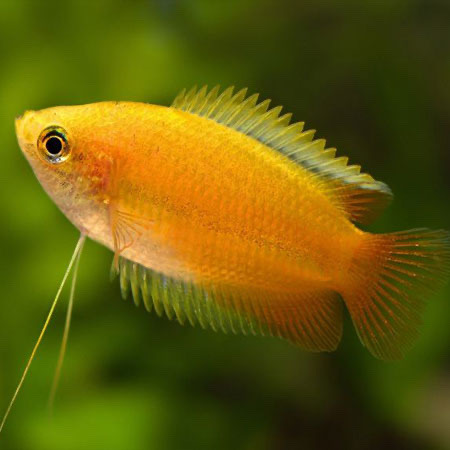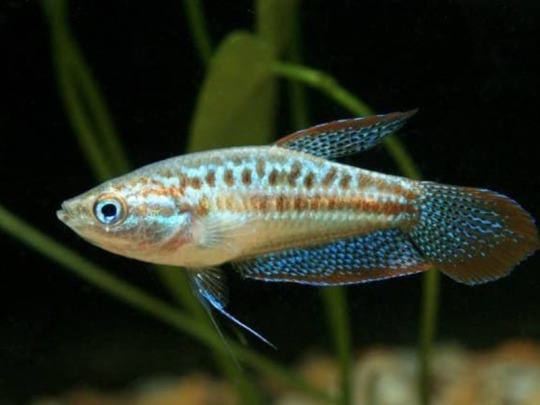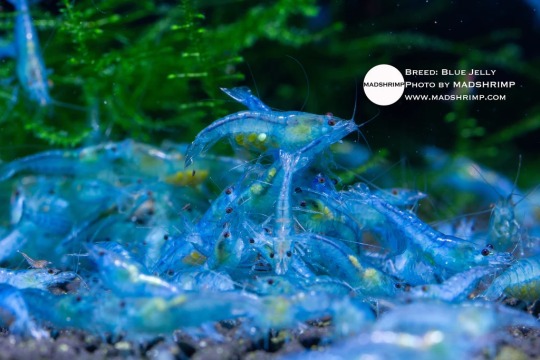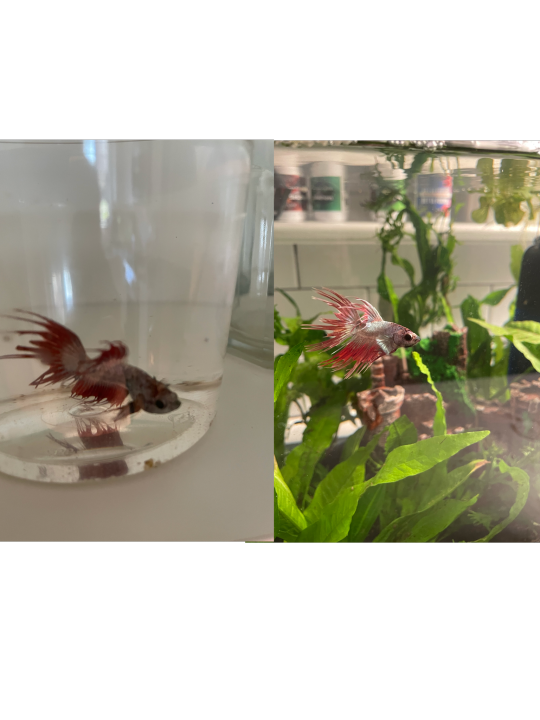#diana walstad
Explore tagged Tumblr posts
Text
I ordered a book about planted aquariums and stuff by the microbiologist Diana Walstad ("Ecology of the Planted Aquarium") and i am so incredibly excited because i want to make a small filter free aquarium in the future using her methods.
Foo the Flowerhorn on Youtube also made a bunch of those which is where i got that idea. (A Playlist full of them can be found here)
The only issue being that i am moving in december and it probably won't be worth it to set up a tank now only to take it down again for my move, so it'll have to wait until i get to my new apartment :(
(I just know I want shrimp and loads of vegetation, not even necessarily fish)
2 notes
·
View notes
Text
the tank i have for the shrimp comes with a built-in filter, bubbler, and light that doesn't seem like it can be separated from one another to function since they all plug into the same chunk bit... this tank also has a history of killing fish WAY larger than my shrimp with this filter just as it is... so... im wondering if i can fashion a false bottom for the filter but the tradeoff is maintaining it is going to be way harder this way if not impossible... ugh....
#i know how this sounds please dont shoot to kill for this but a lot of people who keep these shrimp who run filters end up killing them#or cant get them to breed because theyre REALLY tiny and their eggs are like pepperflake sized#what im thinking i wanna try with them so i can oxigenate their water without intrusive filtration is via walstad method or false bottom#walstad shit is gonna be hard because theyre also brackish and i cant find barely any plants that grow well in soil AND brackish waters#and im thinking false bottom is my best bet for them...? i wanna read Diana Walstad's book on her method. i wonder if she mentions brackish#also im pissed off by how this tank functions as a whole because i cant use an auto-timer switch if everything's hooked up to one point -_-
2 notes
·
View notes
Text
Here are some common Walstad method problems and how to fix them!
One big issue is missing beneficial microorganisms. An easy fix is adding a small filter to boost aeration and flow—Diana Walstad herself uses filters when needed.
Many people also misread the plant table in her book. It’s just a list of easy-to-grow plants, not necessarily top water purifiers. Stick to fast-growing plants for better filtration.
If you��re new, keep aquascaping simple because layered substrates can be tricky for complex designs.
Be careful with sudden fish additions! Plants and microorganisms need time to adapt, or you might get ammonia spikes.
Lastly, watch water levels with hang-on-back filters—if the water drops, the flow can disrupt the substrate. Top off weekly to avoid trouble.
Good luck with your Walstad tank! ✨
1 note
·
View note
Text
It's cool to see the tank coming together. You did such a beautiful job putting it together. I plan on upgrading my current tank to a 15-gal here shortly aswell.
I was surprised to hear that about Sparkling Gourami. I have only ever heard that they are shy and good-natured. Celestial Danios are also known to be shy pairing shy fish with more outgoing fish is usually recommended as it makes the shy fish more comfortable coming out in the open.
You have done a really good job picking these guys out. I look forward to seeing which ones you choose.
I have heard these fishkeeping books are pretty good. They are likely a more reliable source of information.
Encyclopedia of Aquarium Fish by David Alderton The Tropical Fish Handbook by David Goodwin (this is the most recent) Ecology of the Planted Aquarium: A Practical Manual and Scientific Treatise for the Home Aquarist by Diana Walstad



Fish Wishes!
(Images aren’t mine, snatched from google)
Ok so I’ve thought about this for awhile and I’ve seen a couple of these guys in fish stores and done the research to figure out what’s going to be happiest in my 15G nano tank.
Honey Gourami as the centrepiece fish
When I see these guys iRL, they’re always inquisitive, swimming right up to things and then giving them a little pat with their feelers. They’re cute and interesting to watch. Generally considered a peaceful community fish but Reddit has been full of stories of them bullying their own kind until they die :< As they’re happy solo, I think I can give them a stress free life being the centrepiece fish of the tank with a few easygoing nano fish friends.

Or Sparkling Gourami as the centrepiece?
I love the idea of Sparklers. I fell in love with the YouTube series from Foo the Flowerhorn where they set up a tank with sparklers and amanos. In reality I think it’s very risky for the amanos; I’ve had LFS guys and Reddit posts give me anecdotes about the sparklers eating shrimp or killing them off slowly by beating them into hiding. Let’s be honest, I do this hobby to relax. I’m not going to have violence in my tank! Such a shame as they’re so pretty. The image of these guys with their turquoise scales and a backdrop of a bunch of baby blue jelly shrimps would be soo cool but I know there would be suffering so it would never be worth it.
Nano fish
Celestial Pearl Danios
Excuse the shitty iPhone vid. Sometimes you just have to go to see some fish iRL to figure if you’re really going to love them.
I’ll tell you what, every time I see these guys in real life they make my heart flutter with how stinking cute they are. They have beautiful colours and are so small. The ones I’ve seen in store have been about 0.8” in length.
Chilli rasbora
These are another species that always catch my attention in person. Their little faces and big eyes are too cute to handle and their body shape looks like a miniature red shark. They’re also micro predators so they would have a great time gobbling up the creatures and loose eggs in the tank. Thankfully their mouths are too small to do any damage to shrimps!
Extras;
When I think of all the gross lil non-fish creatures I would enjoy in a tank, my mind always gravitates to cherry shrimp or amanos. With amanos I think i’d like the peace of mind to rely on these lil dudes to clean up the nastier hairier algae if it turns up.
However, a hoard of cherries swarming the tank and filling it with bright colours would also be so fun! Blue jellies are the cutest but bright orange ones look like you’ve got a tank full of pre cooked shrimp or living cheetos.
Anyways, that’s my fish wishes! Im not going to get every one of these fish, just a centrepiece fish, some skrimps if compatible and a small shoal of nano fish.
Next weekend I might go to the LFS and see what I can find, I’m so excited!


#planted aquarium#fresh water aquarium#aquarium#pets of tumblr#fish tank#tropical fish tank#Fishblr#Aquablr#fishkeeping#Nano tanks#petblr
15 notes
·
View notes
Text
I wish there were more people posting about the Walstad Method/planted bowls :( Im really into my planted bowl right now and would love to see more examples of other peoples projects. The problem is I've gone through all the tags on instagram, youtube and here :(
38 notes
·
View notes
Text

2ish months of growth! just the anubis and sag are thriving, there's a few aquatic clovers left too. there's (1) good snaily friend in here who has gotten SUPER FAT, & has been dubbed The Gardener 💖💖💖
0 notes
Photo



Planted vase for a family friend's 7th grade classroom.
9 notes
·
View notes
Text
@crittercrew
Okay, disclaimer, I’m no expert, just an aquatic hobbyist 😅
I’ve been trying to keep live aquatic plants for a few years though, and done a ton of research.
The method of having a layer of organic substrate (soil) under a layer of inert (little to no nutrients, such as sand or gravel) substrate was basically pioneered by Diana Walstad, and is thus referred to as the Walstad method. She has a book which, naturally, goes pretty in-depth!
I’ll be honest and say I don’t know a ton about the route without soil, AKA adding the nutrients into the water column via one of the many supplements brands like SeaChem have. As far as I can tell it basically requires being able to spot and identify your plant’s ailments and adding the specific requirement.

You could possibly get away with buying an all-around nutrient solution and adding that during water changes, buuuut in personal experience it wouldn’t be nearly so easy and you’d probably still wind up with dying plants. You should definitely be able to find more information on that, I think it’s generally the route that pet stores and the like take so it might work for you!
I found this article super useful for picking a substrate pair that’d suit my needs. However, as I recall fine sand isn’t recommended as it chokes roots and prevents oxygen from getting to your soil.

(From the above article)
But if axolotl don’t burrow deep and you pick a light-colored sand to cap, it’d probably be easy to spot and clean up any dark-colored soil that got above the cap. And a thin layer of sand likely wouldn’t impede your plants too much provided you had a deep enough layer of soil for them to anchor to. Or you could find a soil that’s fine enough to pass through or will break down in your axolotl’s gut and thus be safe. (Disclaimer #2, I know nothing about axolotl, I’m just guessing based on general aquarium care)
In any case, do your research, consider any approaches and variables carefully (as in, don’t just try to recreate someone else’s setup and hope for the best because it worked for them) and again, good luck! I hope this helps point you in the direction that’s best for you.
4 notes
·
View notes
Text
Oh as an addendum to all the co2 talk, if you’re wondering why I settled on such a complicated system, the answer is simple: spite. Like all hobbies, aqautics is full of That Dude hobbiests who will look down their nose at you if you’re not using the most complicated, cutting-edge techniques and gear. It can be really alienating for a new hobbiest to get their excitement shut down with dismissive commentary about how their set-up sucks, mixed with unfamiliar and hypertechnical terminology (and, uh, usually for the record this is being done by middle aged men who do not like it when People Who Are Not Like Them get into the thing they’re into. Happens with aquariums, comics, tabletop rpgs, guitars... you know, most of the things I like.) My reaction to that mentality is always “fuck you, I’m gonna learn more than you,” but if you want to learn about a real revolutionary, check out Diana Walstad, who basically said, uh, actually, I’m gonna do things my own way and it’s going to kick your techy shit’s ass. Walstad method tanks are beautiful, lush, extremely low cost, require no co2 supplementation, and well developed Walstad tanks are so fucking effective as a closed ecosystem that they don’t even require a filter. We stan this woman:

Also she looks like your favorite bio teacher, lives like a kind witch from a Miyazaki movie, and she is who I want to be when I grow up.
209 notes
·
View notes
Text

Hope for fish TB!
After Aeneas died, I decided the best way to honor his memory would be to use the knowledge I gained, too late for him, to save another fish with myco (fish TB).
Evander here had it bad. I didn’t think he’d make it but he’s thriving.
First, a word of caution: some strains of fish TB can be transmitted to humans. You cannot get TB from a fish, but you can get what’s known as a fish tank granuloma. I strongly recommend glove use. That being said, my immune system is currently in the toilet and I didn’t get sick. But you are risking transmission, and should know this going in.
Here’s what I did, and the rationale:
UV Sterilizer: it worked for Diana Walstad, a fantastic biologist. She wrote a great paper on the topic.
Clarithromycin: used in human mycobacterial infections.
Erythromycin: likely co-infection due to filthy conditions at this especially bad pet store. Evander here is also a dragonscale, which means he’s prone to diamond eye. Diamond eye is thought to be triggered by infection. In humans, erythromycin is used often to protect the eyes. This is, admittedly, weak rationale. But I’m including it because it was a turning point for this little guy. Treating co infections will help their immune systems join the fight.
PolyGuard: very broad spectrum to nab any other secondary infection.
Best wishes to everyone who’s battling this awful disease. There is hope if it’s caught early enough.
19 notes
·
View notes
Text
It is absolutely baffling that every time, without fail, people will recommend newbies in aquaria to set up a Walstad tank as their first project 👀💦
It's upsetting to look at, especially since people are willing to do proper heated cycled tanks for their tropical fish, and then they get something suggested that's not far from Betta in a Vase with some kind of plant as a "filter".
The book of Diana Walstad is interesting, especially regarding plant communication and the ability to fend off algae, but the whole thing is not easy to balance and stock.
There is no true closed system in those tiny piss pots in which we do our feeble attempts to mimic ecosystems.
Please, teach newbies how to heat and cycle their tanks, and not to have rotting plants and dead fish because they did not understand the bare minimum water chemistry.
#Fishblr#Planted tanks#Bettablr#This Walstad fad annoys the hell out of me#Where does your bacteria go#Where do the phosphates go that no one can downgrade#Where do your plants get their micro nutrients from?#Bullshit method#And sorry#If you have a person that wants a tiny tank#Why can't you be assed to invest 20 minutes each week to change the fucking water#If you can't afford that much time#Then don't get a fucking tank
15 notes
·
View notes
Note
thoughts on walstad method tank setups?? it seems very cool to me but also im not experienced with keeping fish so idk if theres some big red flag im missing lmao. specifically i mean the ones that still have filters but do like semi-infrequent water changes
My recommendation if you want to start a Walstad tank? Read the book Ecology of the Planted Aquarium: a Practical Manual and Scientific Treatis by Diana Walstad.
This is, literally, the woman to write the book about Walstad tanks! I understand not everyone can buy books but if you have the cash, please read the book instead of relying on forums or websites that go off what the book says. Not saying that they're inherently wrong, but you'll have a better understanding of the entire idea if you read it!
41 notes
·
View notes
Text
youtube
Walstad Method Dangers To Avoid When Building A Thriving Planted Tank!
PRODUCTS MENTIONED IN THE VIDEO
The Small Hang-On-Back Filter I Use - https://glassboxdiaries.com/nanohobfilter Cheap Sponge Filters I Use - https://glassboxdiaries.com/spongefilter Piezoelectric Air Pump For Sponge Filter In Nano Tanks - https://glassboxdiaries.com/nicrewairpump Cheap USB Water Pump - https://glassboxdiaries.com/usbwaterpump
SOME OF MY OTHER WALSTAD METHOD VIDEOS 🌿 Best Walstad Plants - https://www.youtube.com/watch?v=FJ7BDAKkhRs 🌿 Walstad Myths Debunked - https://www.youtube.com/watch?v=1vPcjW_JhSA 🌿 Walstad Method Mistakes - https://www.youtube.com/watch?v=MJy09gnGC6g 🌿 Walstad Method Shrimp Tank Setup - https://www.youtube.com/watch?v=U6gQkIIldn8 🌿 Worst Walstad Plants - https://www.youtube.com/watch?v=7ftTLlRmW80
Walstad Method Dangers To Avoid When Building A Thriving Planted Tank!
In this video, I’m revealing overlooked dangers and misconceptions tied to the Walstad Method, a popular approach for keeping a naturally balanced aquarium with minimal equipment. Although it highlights nutrient-rich soil and plentiful plants, it’s not always as simple as laying down dirt, capping it, and adding fish. Mistakes can lead to cloudy water, algae, or stressed livestock if not properly managed. Here, I highlight potential pitfalls, explain how to address them, and help you establish a stable Walstad-style tank that thrives for the long run.
One major misconception is that the Walstad Method means no filter at all. While a heavily planted, lightly stocked tank can often manage waste on its own, Diana Walstad herself—especially in a collaboration with KG Tropicals—recommends filters for many scenarios, particularly if you’re just starting out. A basic filter circulates water, boosts oxygen, and gives beneficial bacteria more surfaces to colonize. Yes, some believe that aeration removes CO2, but this effect is typically minor unless you’re growing demanding plant species. Going filterless also makes your aquarium more vulnerable to ammonia spikes if you suddenly increase feeding or stocking. If you still want minimal surface agitation, try a USB air pump that circulates water gently.
On the flip side, too much flow can create issues if you neglect basic maintenance. Hang-on-back filters, for instance, may form a waterfall effect when water levels drop, potentially dislodging the capping layer and releasing soil into the water column. This can lead to cloudiness and nutrient imbalances. I dealt with this once while experimenting with a thin cap layer and forgetting to top off evaporation. Now I always use at least one inch of sand or gravel and keep an eye on the water level to avoid similar mishaps. A simple sponge filter can be an even safer bet if you’re worried about strong currents disturbing your substrate.
Another sticking point stems from misinterpreting the plant lists in Walstad’s book. Many aquarists assume the featured plants are rapid nutrient absorbers, but Walstad herself explained they’re simply species she found easy to grow. Although hardy mainstays like Anubias, Cryptocoryne, Bacopa caroliniana, and Java fern can help support a balanced ecosystem, they’re mostly slow growers and won’t remove excess nitrogen as quickly as faster options. If you’re hoping to combat ammonia spikes effectively, consider mixing in speedier growers like pearlweed, Hygrophila, Rotala, Vallisneria, duckweed, frogbit, or water lettuce. I usually set aside at least a third of the substrate for fast-growing plants to maintain better nutrient uptake, while mixing in slower ‘decorative’ plants for visual appeal.
People also get carried away with complex aquascapes. While you can use driftwood, rocks, or other decorations in a Walstad setup, burying large items in soil or building steep slopes can compromise substrate stability. Some hobbyists worry about hydrogen sulfide buildup in deeper, stagnant areas, but keeping substrate depth at around two inches and ensuring good water circulation typically prevents this. Placing rocks and wood on top of the capping layer rather than burying them is the safer approach, especially for your first attempt. Even if a small pocket of hydrogen sulfide forms, dissolved oxygen typically converts it to harmless sulfate before it harms fish.
Some of the links in this video description may be affiliate links meaning I earn a small commission from any purchases made.
1 note
·
View note
Photo

Oh Meredith, haven’t you learned that overstocked, unfiltered tanks don’t work for you? How many fish will have to die under your neglect before you give up your ego?
For those unfamiliar, the importance of water changes it remove nitrates from the water. Nitrates are the final result of The Nitrogen Cycle, which can be removed with the help of plants and water changes.

[Image Source]
What she’s attempting here is likely inspired by the Walstad Method.
In a nutshell, the Walstad method is a low-maintenance planted tank method written about in a book called “Ecology of the Planted Aquarium” by Diana L. Walstad. While it is a scientifically sound method of fish keeping, it can be pretty risky and you have to know and understand the science behind it, so we don’t recommend it to beginner fishkeepers - or for anyone who isn’t willing to do very frequent water parameter checks, even if the Walstad method is meant to be low maintenance. That being said, in Walstad’s book she has some particular recommendations that Meredith isn’t following with this tank. First of all, filtration. This 10 gallon tank has no filtration at all, where Walstad would recommend a simple HOB (hang-on-back) filter.

Walstad also recommends choosing fish carefully to fit the tank, based on the adult size that the fish can grow to.

Now, we already know that Meredith supports stunting goldfish, but another thing you’ll notice about the fish above is that all of them are pretty low bioload in comparison to goldfish. In order for a Walstad tank to be stable, you’d need a low bioload to plant ratio, as well as a filter for additional waste control and flow.
Goldfish have a high bioload - certainly much higher than dwarf gouramis and the other small schoolers that Walstad recommends for tanks 10-20 gallons.
Meredith’s 10 gallon tank has been set up for perhaps a little over a year with two high bioload goldfish, a betta, and an unknown number of snails. There appears to be no scientific backing for her current setup, and I would imagine it is doomed to fail within the next year.
37 notes
·
View notes
Text
eyyy thank you @cowboydotzip !!
last song: gooey rework ft. chester watson
last movie watched: ponyo!
currently reading: braiding sweetgrass by robin wall kimmerer/ecology of the planted aquarium by diana walstad lmao
currently watching: the mandalorian shhh
currently craving: a coke icee
i forgot how many people to tag instantly SO mutuals if you see this do it if you want hehe
1 note
·
View note
Text
A little aquarium with method of Diana Walstad. No CO2, No filter.
1 note
·
View note